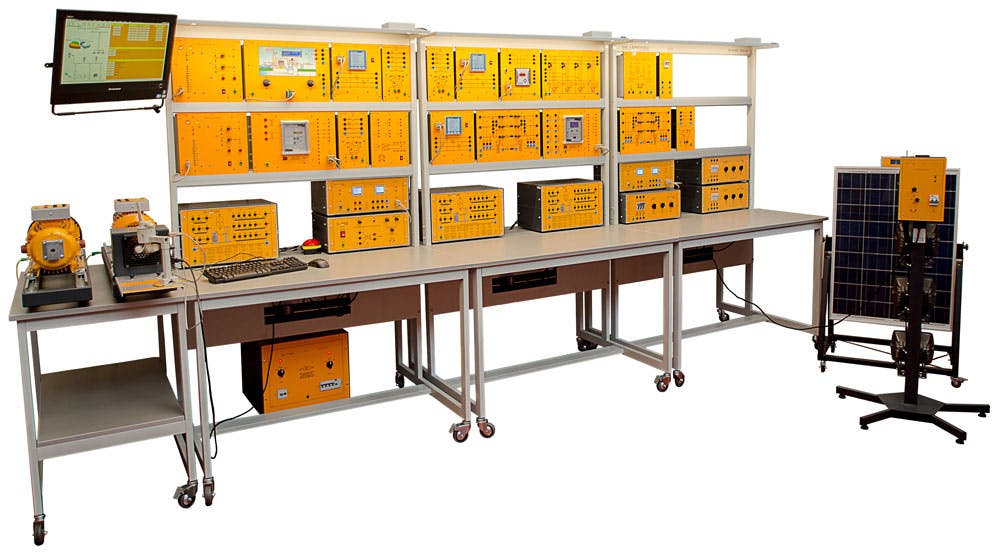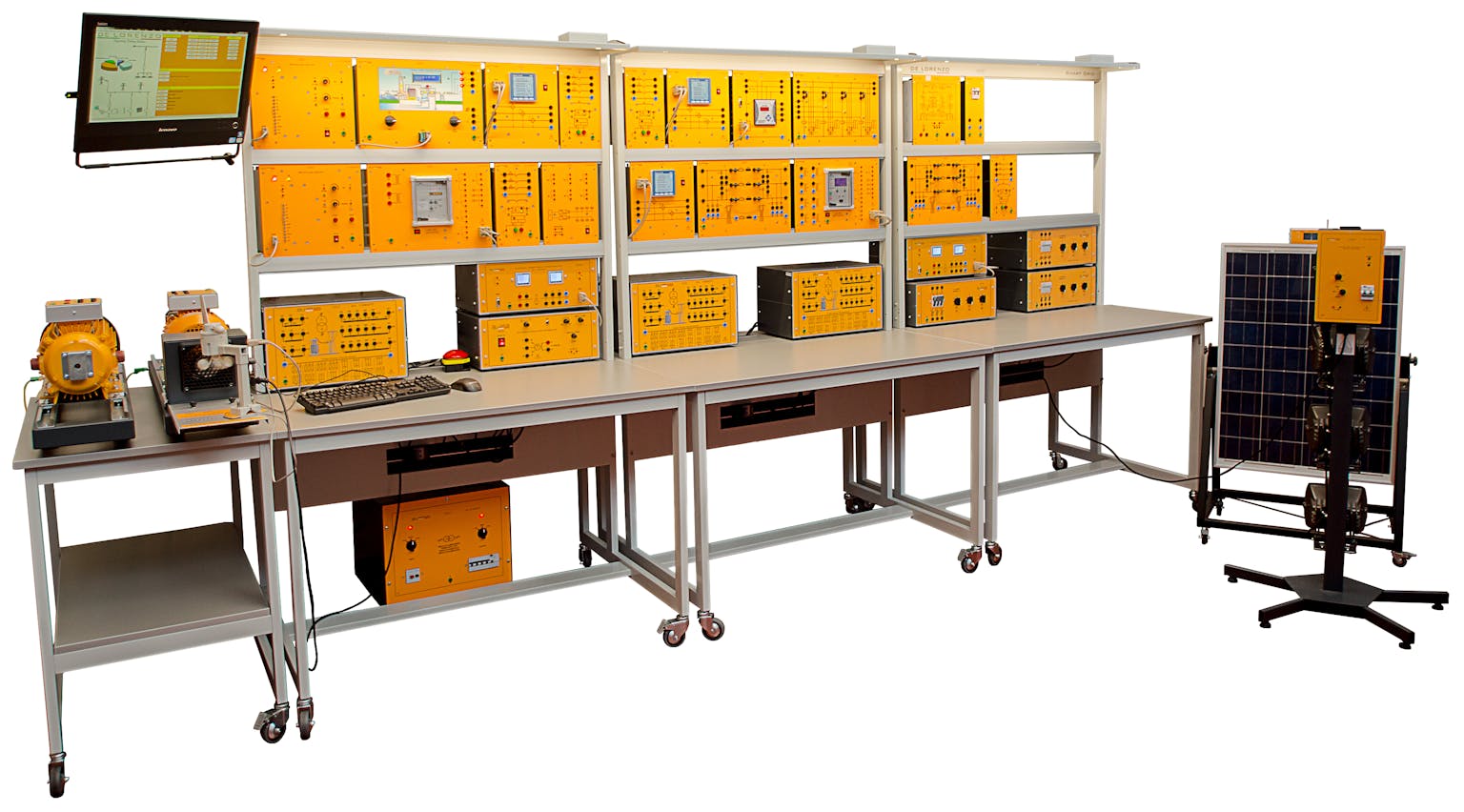SMART GRID Training Systems
SMART GRID Training Systems
The term Smart Grid is used to refer to the smart electrical distribution network. They are basically electricity distribution networks combined with modern information technologies, which provide data to both electricity distribution companies and consumers. To provide intelligence to traditional electrical networks, telematic reading counters are added, that allow to know real-time consumption, both for the company and the end user. With this information it is possible to know consumption habits and improve network efficiency, as well as contribute to energy savings. Smart Grids have information and control elements in operation centers, making it possible to know the network situation and even act remotely on switches and other elements, helping to identify and solve technical problems faster. The smart grid system developed by De Lorenzo is organized into subsystems, each composed of several modules. They range from simulations of alternative energy sources: wind, hydroelectric, and solar. A subsystem that simulates the smart grid, with fault protection modules, that measure voltages and currents in real time to detect faults in the electrical network .Throughout the catalogue we will present in detail each of the elements that compose it, as well as the practical scope in the development of the professional competences of the students. All our modules have interconnected theory and practices that enable students to gradually learn and teachers to plan their courses.


De Lorenzo has designed a modular Smart Grid training system that studies the power flow and interaction between the electricity supplier’s networks (generation, transmission, and distribution systems) and the consumers (residential and/or commercial customers). Industrial grade equipment has been integrated into a controlled environment, providing a flexible and reconfigurable learning platform to study electrical power engineering applications. The core of the laboratory is a simplified scaled-down model of a power distribution system. Several power sources from different renewable energies are connected to the system on different points simulating a distributed power generation system. The energy can be added from the production side (high and mid voltage) or from the end-user side (microgrid). The system includes 3 different energy generation subsystems: – A variable pitch wind plant. – A hydroelectric plant with pumped storage. – Micro-grid energy sources using a solar photovoltaic system with battery storage and an optional micro-wind system generating energy from the low voltage side of the grid. A double busbar system and circuit breakers allow the isolation of sections of the system or the insertion of the available renewable energy sources to create a bidirectional power flow in the distribution network. A set of active measurement devices are strategically placed to monitor the power flow in the system in real time and provide protection. The operation of the laboratory is done through the SCADA software. An industrial feeder manager relay can be configured to study the protection techniques at different points of the system.
SMART GRID DL SGWD2.0

De Lorenzo has designed a modular trainer that studies the power flow and interaction between the electricity supplier’s networks (generation, transmission, and distribution systems) and the consumers (residential and/or commercial customers). Industrial grade equipment has been integrated into a controlled environment, providing a flexible and reconfigurable learning platform to study electrical power engineering applications. The core of the laboratory is a simplified scaled-down model of a power distribution system. Several power sources from different renewable energies are connected to the system on different points simulating a distributed power generation system. The energy can be added from the production side (high and mid voltage) or from the end-user side (microgrid). The system includes 3 different energy generation subsystems: – A variable pitch wind plant. – A hydroelectric plant with pumped storage. – Micro-grid energy sources using a solar photovoltaic system with battery storage and an optional micro-wind system generating energy from the low voltage side of the grid. A double busbar system and circuit breakers allow the isolation of sections of the system or the insertion of the available renewable energy sources to create a bidirectional power flow in the distribution network. A set of active measurement devices are strategically placed to monitor the power flow in the system in real time and provide protection. The operation of the laboratory is done through the SCADA software. An industrial feeder manager relay can be configured to study the protection techniques at different points of the system.